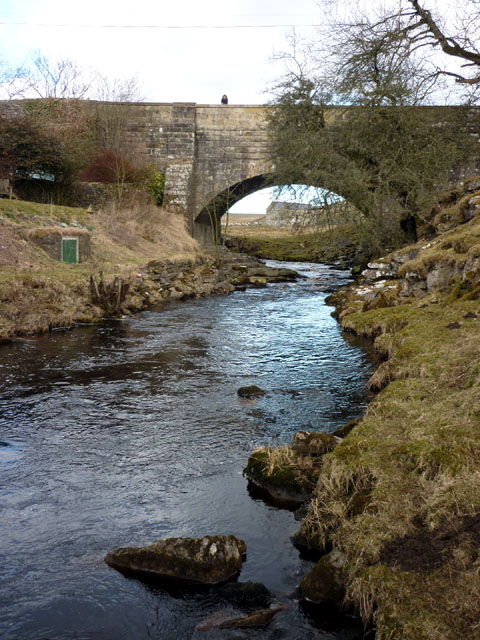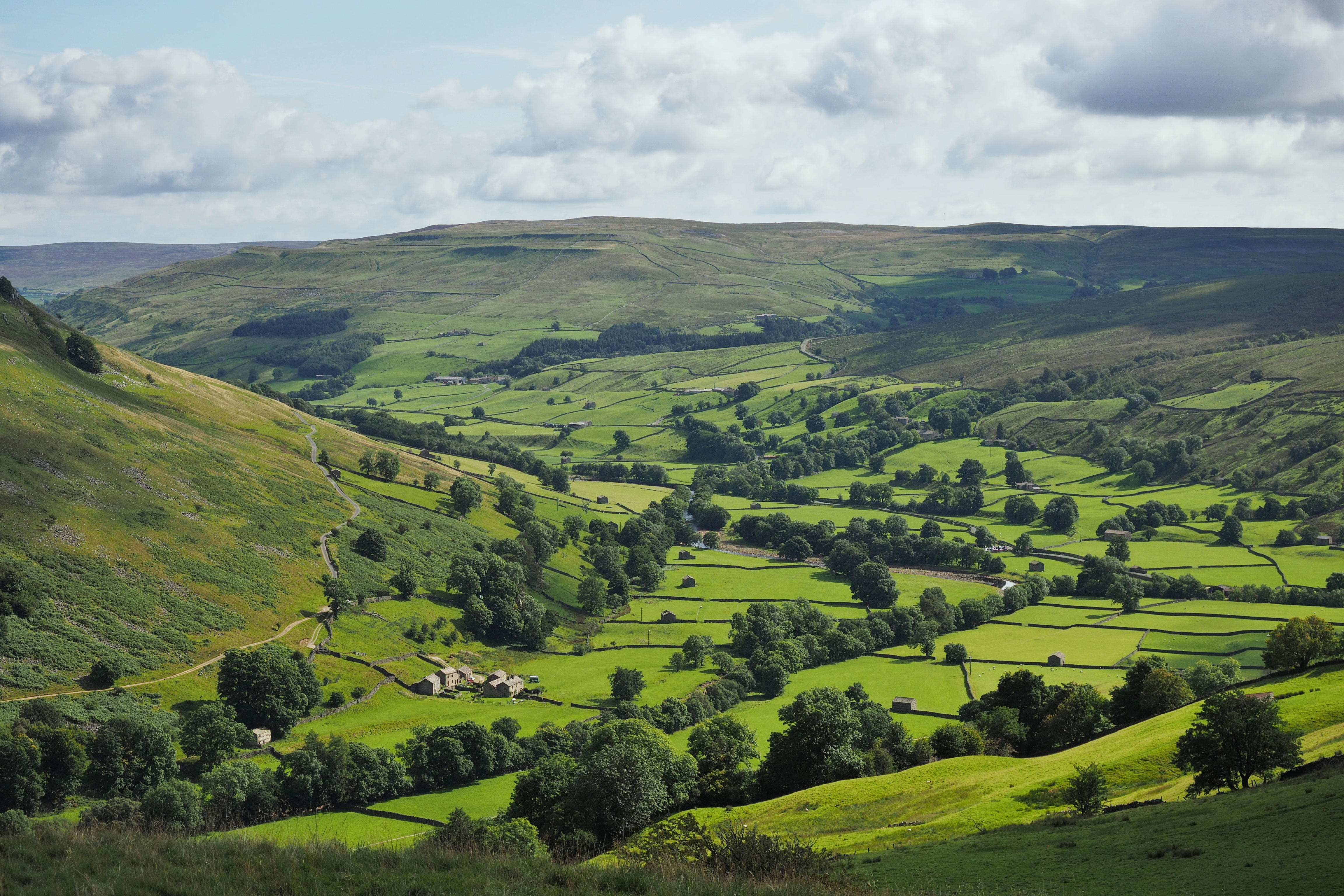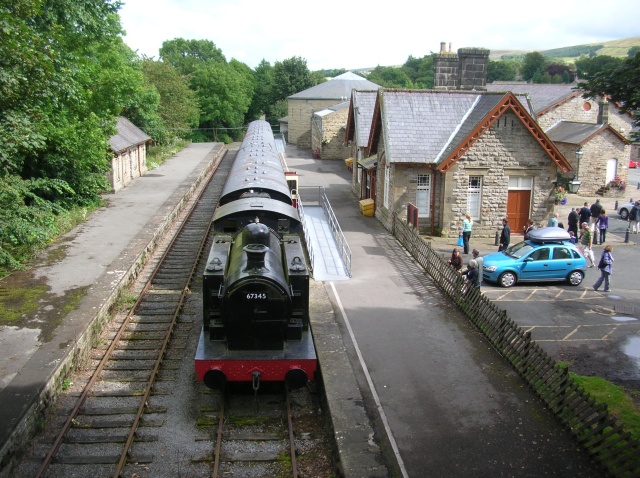|
Ella Pontefract
Ella Pontefract (1896 – 23 February 1945) was the writer of six books on the social history of the Yorkshire Dales related to disappearing rural traditions. Pontefract and her partner Marie Hartley developed a rigorous transcription method for recording Yorkshire dialect, and vocabulary including the subtle distinctions between adjacent valleys. They showed great enthusiasm for the skills, crafts and the work in the Dales. Early days Pontefract was born in the textile valleys of Yorkshire into prosperous families of Huddersfield and Penistone district. Her father's family had been manufacturers and yeomen farmers, her mother's grandfather the founder of Haig textile machinery manufacturers. The family were Liberal politics and members of the nonconformist Chapel. Pontefract attended Wheelwright Grammar School for Girls in Dewsbury, then Highfield Prep School in Harrogate. In 1912 the parents moved the family moved up to Lindley Moor between Huddersfield and Halifax, but t ... [...More Info...] [...Related Items...] OR: [Wikipedia] [Google] [Baidu] |
Yorkshire Dales
The Yorkshire Dales is an upland area of the Pennines in the Historic counties of England, historic county of Yorkshire, England, most of it in the Yorkshire Dales National Park created in 1954. The Dales comprise river valleys and the hills rising from the Vale of York westwards to the hilltops of the Pennine Drainage divide, watershed. In Ribblesdale, Dentdale and Garsdale, the area extends westwards across the watershed, but most of the valleys drain eastwards to the Vale of York, into the River Ouse, Yorkshire, Ouse and the Humber. The extensive limestone cave systems are a major area for caving in the UK and numerous walking trails run through the hills and dales. Etymology The word ''Dale (landform), dale'', like ''dell'', is derived from the Old English word ''dæl''. It has cognates in the North Germanic languages, Nordic/Germanic languages, Germanic words for valley (''dal'', ''tal''), and occurs in valley names across Yorkshire and Northern England. Usage here may have ... [...More Info...] [...Related Items...] OR: [Wikipedia] [Google] [Baidu] |
Slade School
The UCL Slade School of Fine Art (informally The Slade) is the art school of University College London (UCL) and is based in London, England. It has been ranked as the UK's top art and design educational institution. The school is organised as a department of UCL's Faculty of Arts and Humanities. History The school traces its roots back to 1868 when lawyer and philanthropist Felix Slade (1788–1868) bequeathed funds to establish three Chairs in Fine Art, to be based at Oxford University, Cambridge University and University College London, where six studentships were endowed. Distinguished past teachers include Henry Tonks, Wilson Steer, Randolph Schwabe, William Coldstream, Andrew Forge, Lucian Freud, Phyllida Barlow, John Hilliard, Bruce McLean, Alfred Gerrard. Edward Allington was Professor of Fine Art and Head of Graduate Sculpture until his death in 2017. Two of its most important periods were immediately before, and immediately after, the turn of the twentieth cen ... [...More Info...] [...Related Items...] OR: [Wikipedia] [Google] [Baidu] |
1896 Births
Events January–March * January 2 – The Jameson Raid comes to an end, as Jameson surrenders to the Boers. * January 4 – Utah is admitted as the 45th U.S. state. * January 5 – An Austrian newspaper reports that Wilhelm Röntgen has discovered a type of radiation (later known as X-rays). * January 6 – Cecil Rhodes is forced to resign as Prime Minister of the Cape of Good Hope, for his involvement in the Jameson Raid. * January 7 – American culinary expert Fannie Farmer publishes her first cookbook. * January 12 – H. L. Smith takes the first X-ray photograph. * January 17 – Fourth Anglo-Ashanti War: British redcoats enter the Ashanti capital, Kumasi, and Asantehene Agyeman Prempeh I is deposed. * January 18 – The X-ray machine is exhibited for the first time. * January 28 – Walter Arnold, of East Peckham, Kent, England, is fined 1 shilling for speeding at (exceeding the contemporary speed limit of , the first spee ... [...More Info...] [...Related Items...] OR: [Wikipedia] [Google] [Baidu] |
Writers From Yorkshire
A writer is a person who uses written words in different writing styles and techniques to communicate ideas. Writers produce different forms of literary art and creative writing such as novels, short stories, books, poetry, travelogues, plays, screenplays, teleplays, songs, and essays as well as other reports and news articles that may be of interest to the general public. Writers' texts are published across a wide range of media. Skilled writers who are able to use language to express ideas well, often contribute significantly to the cultural content of a society. The term "writer" is also used elsewhere in the arts and music, such as songwriter or a screenwriter, but also a stand-alone "writer" typically refers to the creation of written language. Some writers work from an oral tradition. Writers can produce material across a number of genres, fictional or non-fictional. Other writers use multiple media such as graphics or illustration to enhance the communication of thei ... [...More Info...] [...Related Items...] OR: [Wikipedia] [Google] [Baidu] |
Writers About Yorkshire
A writer is a person who uses written words in different writing styles and techniques to communicate ideas. Writers produce different forms of literary art and creative writing such as novels, short stories, books, poetry, travelogues, plays, screenplays, teleplays, songs, and essays as well as other reports and news articles that may be of interest to the general public. Writers' texts are published across a wide range of media. Skilled writers who are able to use language to express ideas well, often contribute significantly to the cultural content of a society. The term "writer" is also used elsewhere in the arts and music, such as songwriter or a screenwriter, but also a stand-alone "writer" typically refers to the creation of written language. Some writers work from an oral tradition. Writers can produce material across a number of genres, fictional or non-fictional. Other writers use multiple media such as graphics or illustration to enhance the communication of thei ... [...More Info...] [...Related Items...] OR: [Wikipedia] [Google] [Baidu] |
People From West Yorkshire
A person ( : people) is a being that has certain capacities or attributes such as reason, morality, consciousness or self-consciousness, and being a part of a culturally established form of social relations such as kinship, ownership of property, or legal responsibility. The defining features of personhood and, consequently, what makes a person count as a person, differ widely among cultures and contexts. In addition to the question of personhood, of what makes a being count as a person to begin with, there are further questions about personal identity and self: both about what makes any particular person that particular person instead of another, and about what makes a person at one time the same person as they were or will be at another time despite any intervening changes. The plural form "people" is often used to refer to an entire nation or ethnic group (as in "a people"), and this was the original meaning of the word; it subsequently acquired its use as a plural form of per ... [...More Info...] [...Related Items...] OR: [Wikipedia] [Google] [Baidu] |
Hawes
Hawes is a market town and civil parish in the Richmondshire district of North Yorkshire, England, at the head of Wensleydale in the Yorkshire Dales, and historically in the North Riding of Yorkshire. The River Ure north of the town is a tourist attraction in the Yorkshire Dales National Park. The population in 2011 was 887. The parish of Hawes also includes the neighbouring hamlet of Gayle. Hawes is west of the county town of Northallerton. It is a major producer of Wensleydale cheese. Hawes has a non-profit group that seeks funding to re-open or keep community amenities. History There is no mention in the ''Domesday Book'' of a settlement where the current town is. The area was historically part of the large ancient parish of Aysgarth in the North Riding of Yorkshire, and there is little mention of the town until the 15th century when the population had risen enough for a chapel of ease to be built. The settlement was first recorded in 1307 as having a marketplace. The p ... [...More Info...] [...Related Items...] OR: [Wikipedia] [Google] [Baidu] |
Dales Countryside Museum
The Dales Countryside Museum is a local museum for the Yorkshire Dales National Park in Northern England. Run by the National Park Authority, it tells the story of the people who have lived and worked in the Yorkshire Dales for over a 1,000 years. The basis of the museum was a collection of artefacts gathered by Marie Hartley, Ella Pontefract and Joan Ingilby. The museum The museum is located beside the disused Hawes railway station in the small town of Hawes at the head of Wensleydale. The museum's outdoor display includes a real steam train and carriages on the track bed of the former Wensleydale Railway. The railway station remains in its original site, now part of Museum building. Since 2015, part of the redundant station has been rented to a business operating a bike shop and later, also a cafe. The steam engine a Robert Stephenson & Hawthorn Works No 7845 No.12 Current number 67345 0-6-0T was built in 1955 by Robert Stephenson & Hawthorn to work at Hams Hall Power Station ... [...More Info...] [...Related Items...] OR: [Wikipedia] [Google] [Baidu] |
Leyburn
Leyburn is a market town and civil parish in the district of Richmondshire, North Yorkshire, England, sitting above the northern bank of the River Ure in Wensleydale. Historically in the North Riding of Yorkshire, the name was derived from 'Ley' or 'Le' (clearing), and 'burn' (stream), meaning clearing by the stream. Leyburn had a population of 1,844 at the 2001 census increasing to 2,183 at the 2011 Census. The estimated population in 2015 was 2,190. History Leyburn was mentioned in the Domesday Book of 1086 but had no recorded population; the growth of Leyburn as a major hub is linked to the decline in fortunes of nearby Wensley, which had prominence as the only market town in Wensleydale until being devastated by the plague in 1563, leaving what was once an important and prosperous town, mostly abandoned. Leyburn's stature increased in the 17th century when a market charter was granted by Charles II in 1686. Leyburn Town Hall was built in 1856 by Lord Bolton, and now h ... [...More Info...] [...Related Items...] OR: [Wikipedia] [Google] [Baidu] |
Askrigg
Askrigg is a small village and civil parish in Wensleydale in the Yorkshire Dales National Park. It is part of the Richmondshire district of North Yorkshire, England. The village and its parish are located in Upper Wensleydale, west of Leyburn, and east of Hawes. It is west of the county town of Northallerton. History The village is mentioned in the ''Domesday Book'' as ''Ascric''. At the time of the Norman invasion the manor was held by ''Arnketil''. Afterwards the lands were owned on behalf of the Crown by ''Count Alan of Brittany'' who granted then lordship of the manor to ''Gospatric, son of Arnketil''. By 1251 the manor had come to the ''Fitz Hugh'' family who were also lords of ''Ravenworth'' and stayed with them until the 16th century. In the early 16th century the manor became the possession of Sir Thomas Parr. His son William died without issue in 1571 when it became the property of the Crown. In 1664 the manorial rights were leased from the Crown by the ''Metcalf ... [...More Info...] [...Related Items...] OR: [Wikipedia] [Google] [Baidu] |
Joan Ingilby
Joan Alicia Ingilby MBE (11 December 1911 – 27 October 2000) was a British poet, historian and collector. Her books recorded life in the Yorkshire Dales and she was a co-founder of a museum founded on the artefacts that she and Marie Hartley had collected. Life Ingilby was born at Sleningford Grange in North Stainley on 11 December 1911. Her parents were Marjorie Cecily (born Phelips) and Lieutenant-Colonel John Uchtred Macdowall Ingilby. Her father was related to the family who own Ripon Castle. Ingilby was sent to Norfolk for her education. She was a poet and her work was published in Country Life and Time and Tide. Marie Hartley and Ingilby started to work together. Hartley had previously been in a long partnership with Ella Pontefract and they had published six books together. Pontefract had died young in 1945. Ingilby was an admirer of Ponterfract, she said "She loved people and was the best listener I have ever met". Ingilby and Hartley curated written material and art ... [...More Info...] [...Related Items...] OR: [Wikipedia] [Google] [Baidu] |



.jpg)


_1938.jpg)



